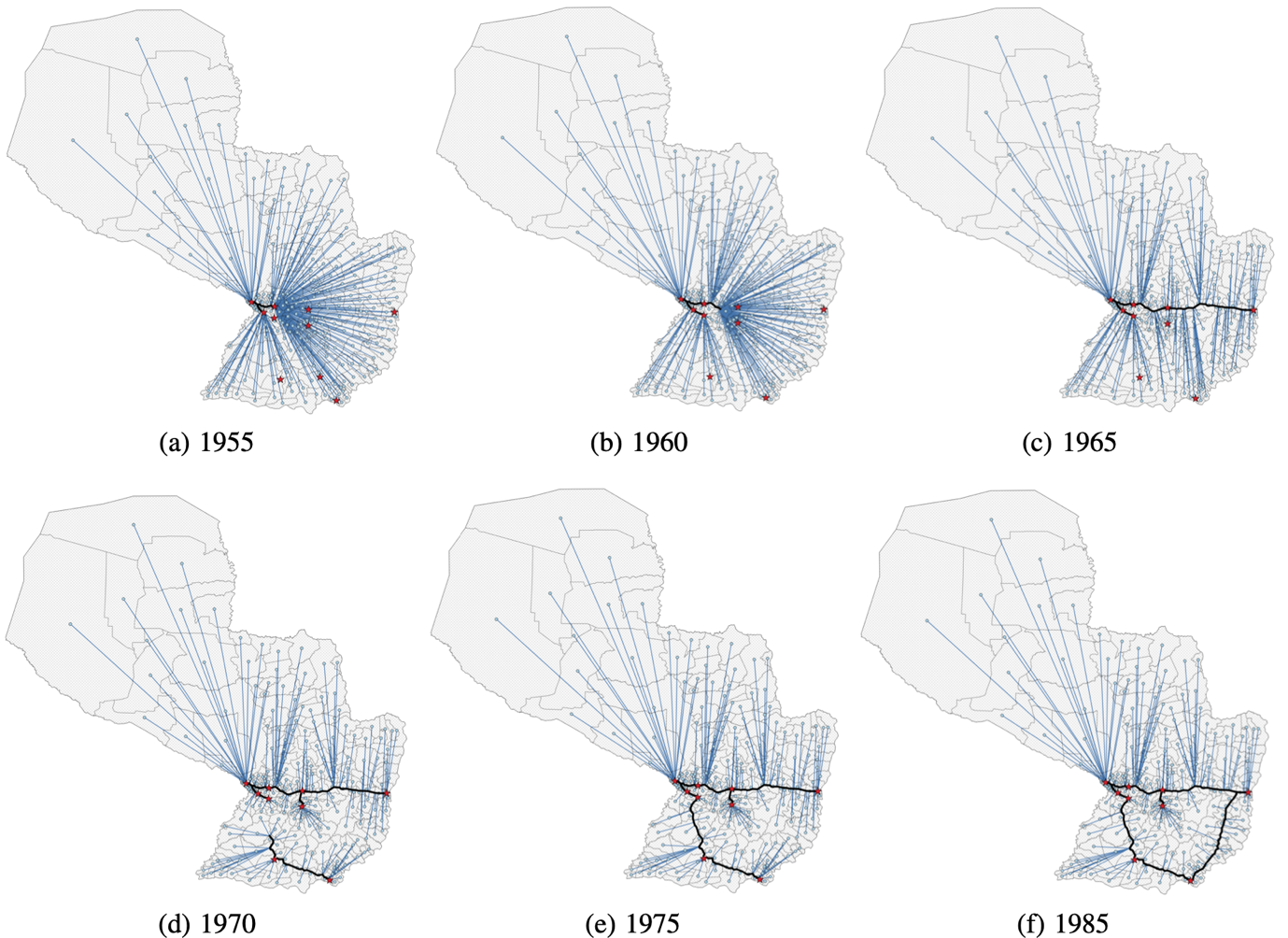
Infrastructure can drive development, but history shows it can also be used for political control. Paraguay’s roads under Stroessner's dictatorship highlight this dual nature, providing valuable lessons for today’s policymakers.
Infrastructure development is often praised for driving economic growth, connecting people, and promoting trade (Berg et al. 2017, Asturias et al. 2019). However, history shows that under certain conditions, infrastructure can be exploited for political power, serving as a tool for control rather than public good. Dictators provide a case in point, as they routinely pursue policies and projects to increase their popularity and remain in power (Bueno de Mesquita et al. 2003). The case of Alfredo Stroessner’s regime in Paraguay, the longest dictatorship in South America (1954-1989), exemplifies the multifaceted nature of infrastructure. Recent research uncovers how the construction of road networks under Stroessner's rule facilitated state-led repression and favoured political elites, leaving a legacy that hinders development to this day (González et al. 2024).
Roads as instruments of power and control
Under Stroessner’s dictatorship, Paraguay’s road network expanded significantly. Initially sparse, with less than 200 kilometers of paved roads concentrated around the capital city of Asunción, the network grew to connect strategic regions, notably the Eastern frontier (Figure 1). While roads are typically seen as facilitators of economic opportunity, under Stroessner, they had darker implications.
Figure 1: Road construction in Paraguay

Note: The construction of the road network is based on the authors’ work using archival documents.
Analysis of archival data and documents from Paraguay’s Truth and Justice Commission (Comisión de Verdad y Justicia 2008) reveals that proximity to these new roads led to increased state repression. Records of repression under the Stroessner dictatorship, popularly known as “Archives of Terror,” contain information of nearly 10,000 instances of detentions, torture, executions, and disappearances with their date and location of occurrence. Empirical analysis linking these events of repression with geo-spatial data that tracks the evolution of road networks, shows that districts closer to newly constructed roads were more accessible for the dictatorship, reducing the costs and logistical challenges of suppressing dissent. This relationship underscores how certain infrastructure investments can be strategically deployed to reinforce authoritarian control.
The misallocation of land benefitting regime loyalists
The Stroessner regime did not only use roads for repression, they also played a role in the misallocation of valuable agricultural land. The construction of roads enabled easier access to fertile lands, which were often illegally allocated to regime loyalists such as military officers and politicians. Over 20% of Paraguay’s total land area was found to be redistributed in this manner during the dictatorship, creating stark land inequalities. The illegal allocation of plots acts was documented in the “Archives of Terror” and subsequent reports from the Truth and Justice Commission, showcasing the extent to which infrastructure could be leveraged for personal and political gain. These documents contain unusually rich information regarding the legality of each land allocation, together with the size, location, and beneficiary of each plot.
Lasting impacts of the dictatorship on development in Paraguay
The misuse of infrastructure and land allocations during Stroessner’s regime had consequences that extend far beyond his time in power. Districts that saw significant illegal land allocations have been shown to lag in development even decades later. Indicators such as lower nighttime light intensity, reduced agricultural productivity, and higher instances of rural conflict highlight the enduring effects of these policies. The research suggests that land concentrated in the hands of political allies led to extractive practices that prioritised short-term gains over sustainable development, contributing to persistent economic disparities and social unrest.
Making infrastructure work for everyone, not just a select few
This historical context provides valuable lessons for contemporary policymakers. While infrastructure investments can undoubtedly foster growth, ensuring that such projects are transparent and equitably managed is essential to avoid repeating past mistakes. Monitoring the allocation of land and resources tied to new infrastructure and instituting checks against corruption can prevent infrastructure from becoming a tool for repression and elite enrichment.
Paraguay’s history under Stroessner is a cautionary tale about the double-edged nature of infrastructure. Roads can empower economies and connect communities, but without oversight and equitable policies, they can also entrench power and inequality. Policymakers today must heed these lessons to harness the full, positive potential of infrastructure projects, ensuring they serve the many, not the few.
References
Asturias, J, M Garcia-Santana, and R Ramos (2019), “Competition and the welfare gains from transportation infrastructure: Evidence from the golden quadrilateral of India,” Journal of the European Economic Association, 17(6): 1881–1940.
Berg, C, U Deichmann, Y Lieu, and H Selod (2017), “Transport policies and development,” Journal of Development Studies, 53(4): 465–480.
Bueno de Mesquita, B, A Smith, R M Siverson, and J D Morrow (2003), The Logic of Political Survival, MIT Press.
Comisión de Verdad y Justicia (2008), Informe final. Anive haguã oiko, Asunción, CVJ.
González, F, J Miquel-Florensa, M Prem, and S Straub (2024), “The dark side of infrastructure: Roads, repression, and land in authoritarian Paraguay,” Economic Journal, forthcoming.




